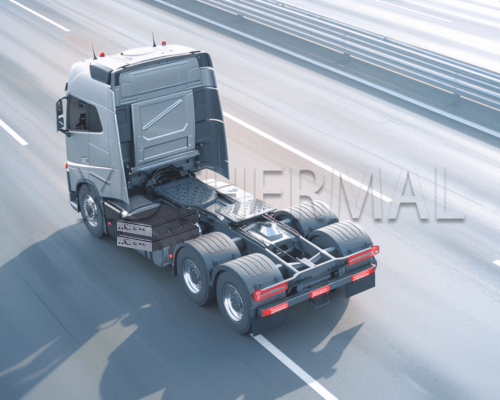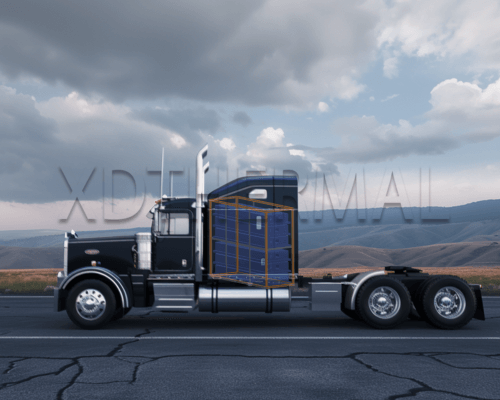If you’re looking for a high-voltage battery pack enclosure solution for a truck project, you’ve probably found that there are so many options in the industry that it can be hard to decide which one is right for you all at once. After all, in addition to considering high-voltage safety, there are many practical issues that need to be taken into account in the battery shell of trucks, such as: Is it better to use aluminum alloy or high-strength steel for the battery shell? In a high-voltage environment, how can the design ensure that the insulation performance of the enclosure meets the regulatory requirements? Will the strength of the shell decrease after lightweighting, and how to balance it? Also, the technical parameters of different manufacturers are different, which indicators are really important?
Don’t worry, whether you’re looking to learn more about this or get started with procurement preparation, this article will help you sort out these questions and make it easy for you to understand the right high-voltage battery enclosure solutions for the truck industry.
I believe every truck enclosure project starts with meticulous structural design, ensuring each battery module has sufficient space and remains secure through bumpy roads and heavy loads. The importance of protective seals needs to be emphasized, especially for trucks operating in harsh terrain or extreme weather conditions. If these fundamentals are neglected, the entire system can be affected by water ingress or excessive pressure.
Technical considerations for truck battery pack enclosures revolve around three primary areas: structural design(adequate internal space for modules), protection levels(IP-rated sealing ,IP67 or higher), and robust construction against shock and vibration. Proper arrangement of components and support structures streamlines maintenance while minimizing the risk of damage. Comprehensive sealing further prevents dust and water infiltration, ensuring reliable performance under harsh conditions.
In my experience, ignoring detailed structural planning often leads to wires chafing or modules shifting over time. I always aim for a sealed enclosure that meets or exceeds IP67, particularly if the truck regularly travels on unpaved roads or through rain and snow. Reinforcements at potential stress points can also prevent cracking or deformation. This forward-thinking approach spares you from major headaches down the line and upholds system reliability.
Whenever I help specify truck battery pack enclosures, I focus on two primary metals: aluminum and steel. Aluminum stands out for its lighter weight and impressive heat dissipation, while steel boasts low raw material costs and a strong track record in withstanding impacts. I don’t usually consider composite options for heavy truck applications (at least not for the projects I’ve taken on) because they simply don’t provide the structural strength needed for large vehicles over an extended service life.
Aluminum offers a balanced solution: corrosion resistance, lighter weight, and effective heat conduction. Steel typically costs less upfront yet weighs more and may require extra corrosion-proof treatments. Composites seldom meet the strength demands of long-haul trucks, making metals the more dependable choice for rigorous, heavy-duty operations.
I’ve dealt with numerous enclosure suppliers around the globe, and I’ve learned that a great partner isn’t just about certifications or fancy marketing materials. It’s about having the production capacity to handle large orders, the engineering know-how to troubleshoot design challenges, and the willingness to provide reliable after-sales support.
Leading suppliers combine strong technical expertise, IATF 16949 certification, and advanced production lines that enable large-scale output. Case studies from well-known truck fleets confirm how robust enclosures minimize downtime and enhance system reliability. A transparent communication process ensures accurate specifications, timely delivery, and effective post-purchase support.
In battery liquid cooling system projects, the design and manufacturing are often carried out by different professional teams. The diagram below shows the common structural design and layout schemes in the industry, and is only for technical communication and understanding reference – to help you understand the technical details and manufacturability of liquid-cooled components. (XD THERMAL does not provide design services, but focuses on providing precise, high-quality manufacturing support and production feasibility analysis for customers’ existing design solutions, and the design drawings of the battery case are usually provided by customers.)



If I were a purchaser,I typically begin by looking at how many enclosures a potential supplier can produce per month. Then, I check their track record—do they have references from reputable truck manufacturers? If they do, I take note of the results: Did the enclosures perform well under harsh conditions? Were the clients satisfied with the service response time when issues arose? I’ve found that suppliers with an in-house machining center and advanced testing facilities can rapidly address changes in design, which is critical for adapting to real-world conditions.
Safety underpins every aspect of battery enclosure design. Regulatory frameworks, ranging from ECE-R100 for electric vehicle crash standards to ISO 6469 for electric safety, dictate how enclosures should withstand collisions, protect occupants, and prevent hazardous conditions like thermal runaway. Ensuring your enclosure meets or exceeds these regulations safeguards your investment and brand reputation.
Comprehensive safety standards address collision resistance, insulation, and heat dissipation. Verify that enclosures can absorb impact, prevent electrical leaks, and contain fire risks. Certified designs prove compliance with ECE-R100, ISO 6469, or similar global rules—critical for on-road use and insurer acceptance.
Structural Safety Requirements:
A truck battery enclosure must endure collisions without deforming in a way that compromises battery integrity. Crash testing protocols—modeled after global automotive standards—evaluate maximum stress thresholds and puncture resistance. When working on a heavy truck battery pack project I typically review data from crash simulations to confirm that the enclosure won’t buckle or puncture under stress. Sometimes I will include metal reinforcement strips where the frame is most vulnerable to impact.(Reinforced framing, strategic ribbing, or shock-absorbing brackets protect internal battery modules.)
Electrical Safety Compliance:
High-voltage systems require robust insulation, grounding, and separation measures. Properly routed cables and secure connectors limit the risk of short circuits or electrical arcs. Many authorities mandate regular testing of insulation resistance and leak detection. It’s prudent to incorporate fail-safe switches that isolate the battery automatically if abnormal conditions arise.
Thermal Runaway & Fire Safety:
Thermal runaway remains a prime concern in lithium-based batteries. Integrating fire-resistant materials and compartmentalized enclosures helps delay or contain potential fire. In addition, specialized fire retardant coatings or barriers may help meet regional fire safety regulations. Compliance with UL 94 (flammability standard) or similar norms fosters broader acceptance by insurers and regulators.
I’ve witnessed firsthand how poor temperature control can cripple battery performance, especially in heavy-duty trucks that operate long hours or face steep inclines. That’s why I prioritize designing a cooling approach—often liquid-based—to integrate neatly into the enclosure, ensuring stable temperatures around each module.
Efficient cooling systems rely on liquid channels(liquid cooling plate), serpentine tubes, or similar structures built into the enclosure for direct heat transfer. This reduces the risk of hotspots, sustains battery capacity, and curbs premature degradation. A harmonized enclosure-cooling layout also streamlines the assembly process and helps avoid leakage points.
I tend to recommend integrated liquid cooling enclosures because trucks often endure intense workloads that generate continuous heat. By embedding coolant channels directly into the enclosure walls, it can maintain consistent cell temperatures without adding unnecessary bulk. In my experience, a well-thought-out cooling strategy not only safeguards battery modules but also cuts back on maintenance costs. This type of enclosure also takes into account the spacing of the components, because tight packing without proper airflow channels usually leads to thermal imbalances—something I learned the hard way during earlier projects.
I understand the tension between wanting the best enclosure features and needing to keep costs manageable, especially for large fleets. I’ve come to appreciate that a cost-effective solution involves strategic materials procurement, automated production processes, and well-negotiated partnerships with suppliers.
Major cost drivers include raw material prices, tool setup for automated lines, and bulk ordering. While steel may appear cheaper initially, aluminum can offset expenses by lowering truck weight and enhancing corrosion resistance. Automated processes reduce labor costs, bolster output consistency, and enable reliable scale-up for extensive fleets.
“Price” is not only a customer’s problem, but also a manufacturer’s concern, and I usually weigh the total life cycle cost of each material, not just the purchase price. You have to realize that aluminum saves fuel and reduces maintenance downtime associated with corrosion. Steel enclosures may be easier to fabricate, but protective coatings and increased fuel consumption due to increased weight must be considered. In the future you may find any emerging recycling programs or changes in material availability in the marketplace, so keep up with the times and the latest information.
In my experience, combining strong structural design, well-chosen materials, reputable suppliers, thorough safety standards, efficient thermal management, and a strategic approach to costs paves the way for a robust truck battery enclosure.